Visit http://www.ala.org/bbooks/frequentlychallengedbooks for lists of frequently challenged books by year.
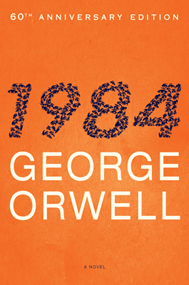
1984 by George Orwell
George Orwell's thought-provoking novel 1984 covers the themes of dehumanization, isolation, repression, loneliness, social class disparity, and abuse of power.
Published in 1949, the dystopian novel was banned in the USSR until the 1980s for political reasons. In 1981, it was challenged in Jackson County, Florida, for being "pro-communist" and containing "explicit sexual matter".
This teacher's guide for 1984 includes chapter summaries, questions, and extension activities to use with the novel.
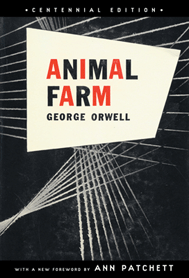
Animal Farm by George Orwell
George Orwell's Animal Farm is an allegory of the 1917 Russian Revolution. It was banned in the Soviet Union for being anti-communist while in the U.S. it was challenged for its political theories. In 2002, the Ministry of Education in the United Arab Emirates banned the book in schools for containing materials that contradict Islamic and Arabic values.
Activity: Choose from several activities, discussion questions, and topics for writing assignments in this literature guide for Animal Farm. It also includes a brief synopsis of each chapter, followed by teaching suggestions for use before, during, and after reading the novel.
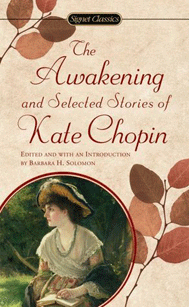
The Awakening by Kate Chopin
The Awakening by Kate Chopin is the story of a young wife and mother searching for her own identity during the late 1800s.
When The Awakening was published in 1899, it was criticized for being immoral and scandalous. It has been challenged for its treatment of gender roles and its depiction of female sexuality.
Use this comprehensive teacher's guide to The Awakening to link classic themes from the patriarchal 1800s to modern times. Students will examine how gender issues and themes of motherhood and marriage in The Awakening are still relevant today.
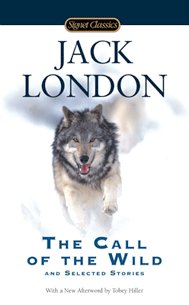
The Call of the Wild by Jack London
One of the most widely read American classics, The Call of the Wild by Jack London is about a domesticated dog who must use his instincts to survive as a sled dog in the Yukon.
Published in 1903, The Call of the Wild by Jack London was banned in Italy and Yugoslavia in 1929 for being "too radical". In 1933, it was burned by the Nazi Party because of London's political views. In the United States, it has been challenged for depictions of violence.
This literature guide for Call of the Wild includes pre-reading activities, summaries and teaching suggestions, discussion questions, and extended learning activities.
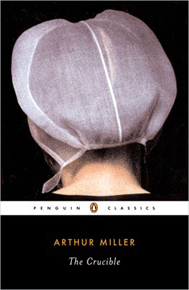
The Crucible by Arthur Miller
Written in the early 1950s during the McCarthy hearings, The Crucible is a classic play about the Salem Witch Trials.
In 2006, the Fulton superintendent banned The Crucible from being performed at Fulton High School in Missouri to avoid controversy.
This teacher's guide provides a synopsis of The Crucible, discussion questions, and extended learning activities.
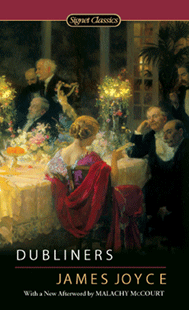
Dubliners by James Joyce
Dubliners by James Joyce is a collection of short stories about lower-middle-class characters in Dublin, Ireland.
James Joyce had a difficult time getting Dubliners published, and it was banned in Ireland almost immediately following its publication. It is one of Ireland's most notoriously banned books.
Each section of this literature guide for Joyce's Dubliners contains a synopsis and activities for before, during, and after reading the novel.
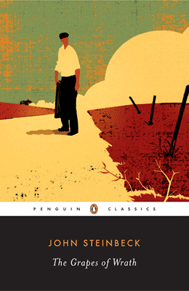
The Grapes of Wrath by John Steinbeck
In 1936, John Steinbeck conducted research on displaced tenant farmers who had moved to California from Arkansas and Oklahoma; in 1937, he toured the Dust Bowl and traveled with migrants on their relentless drive to California. From those experiences he wrote The Grapes of Wrath.
When The Grapes of Wrath was published in 1939, Steinbeck was praised and harshly criticized for the novel's strong language and sociopolitical implications. It quickly became a best-seller, but it was also banned (and even burned) in some places, including Kern County, California.
Use the discussion topics, research questions, and activities in this literature guide to prepare students to read The Grapes of Wrath. Study questions, writing responses, and extension activities will help students delve deeper into the story. Students will learn about the Dust Bowl, the Great Depression, and the 1930s in America.

The Great Gatsby by F. Scott Fitzgerald
The Jazz Age novel The Great Gatsby by F. Scott Fitzgerald is the timeless story of Jay Gatsby and his love for Daisy Buchanan.
In 1987, The Great Gatsby was challenged at the Baptist College in Charleston, South Carolina, because of "language and sexual references in the book."
This teaching unit for The Great Gatsby includes projects, skill-building activities, and references for you to use in your instruction. You'll find journaling assignments, vocabulary lists, information about the 1920s, and much more.
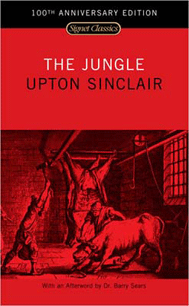
The Jungle by Upton Sinclair
The Jungle by Upton Sinclair unveils the horrible injustices of Chicago's meat packing industry at the turn of the twentieth century, as the protagonist discovers the truth about opportunity and prosperity in America.
This book was banned for political reasons in Yugoslavia (1929), East Germany (1956), and South Korea (1985). In 1933, it was burned by the Nazi Party because of Lewis's political views.
This teaching guide for The Jungle will provide you with activities and discussion before, during, and after reading the novel.
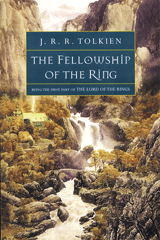
The Lord of the Rings by J.R.R. Tolkien
The Lord of the Rings epic by by J.R.R. Tolkien has captured the hearts and imaginations of fantasy fiction fans around the world. In 2001, a group in Alamagordo, New Mexico claimed the books were satanic and burned copies of The Lord of the Rings and other works by Tolkien in front of a church.
Activity: Plan a unit on Tolkien with these teaching resources for The Lord of the Rings.
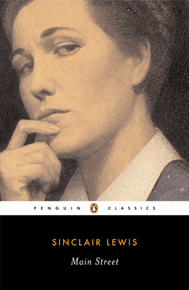
Main Street by Sinclair Lewis
Main Street by Sinclair Lewis examines the homogenizing influence of small town life. An unexpected commercial success, the story is set in Gopher Praire, roughly based on Lewis's hometown of Sauk Centre, Minnesota.
Because of its depiction of life in a small town, Main Street was not warmly received in Sauk Centre; it was banned in nearby Alexandria, Minnesota.
Use the pre-reading activities in this comprehensive literature guide for Main Street to prepare students for reading this mature work. This guide also includes questions, historical notes and allusions, vocabulary study, quotations, and assorted activities for each chapter.
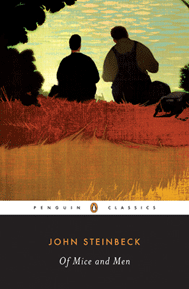
Of Mice and Men by John Steinbeck
Of Mice and Men by John Steinbeck is among the top 10 most frequently challenged books of the 1990s and 2000s. In 2007, the book was banned by the Appling County School Board in Georgia after a local church minister challenged the book. In 2008, a parent in Appomattox, Virginia tried to have the book removed from the 10th grade high school English curriculum; she objected to the novel's graphic language.
Activity: Help prepare students for what they will read with this literature guide for Of Mice and Men. It contains pre-reading activities, post-reading activities, an overview of the story, and a brief discussion of plot, character development, and theme.
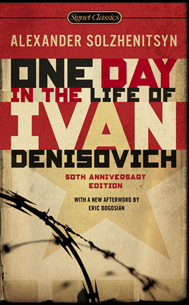
One Day in the Life of Ivan Denisovich by Alexander Solzhenitsyn
One Day in the Life of Ivan Denisovich by Alexander Solzhenitsyn concentrates on one man, Ivan Denisovich Shukhov, as he attempts to survive another day in a 1950s Soviet labor camp.
One Day in the Life of Ivan Denisovich was first published in 1962. The printing of his work was stopped soon after. Many of Solzhenitsyn's works were banned in the Soviet Union for political reasons. Inn 1969, Solzhenitsyn was expelled from the Soviet Writer's Union. He was accused of treason and deported from the Soviet Union in 1974.
This comprehensive literature guide for One Day in the Life of Ivan Denisovich includes activities for before, during, and after reading the novel. Students will become familiar with Yiddish and Russian words, examine major themes, and research Joseph Stalin and the gulag system. This guide also includes detailed study questions, quotations from the novel, discussion topics, and extended learning activities.
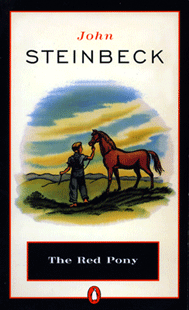
The Red Pony by John Steinbeck
The Red Pony by John Steinbeck has been challenged for its violent descriptions. Set in the 1930s, this coming-of-age story about Jody—the son of a California rancher of limited economic means—deals with tragedy, joy, and the harsh lessons of life and death.
Activity: Enhance understanding of Steinbeck's novella with this teaching guide for The Red Pony. It includes pre-reading activities; discussion of plot, character development, and theme; and suggested teaching methodologies.
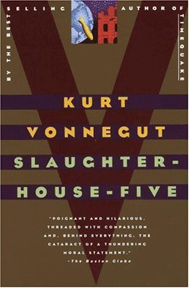
Slaughterhouse-Five by Kurt Vonnegut
Slaughterhouse-Five by Kurt Vonnegut tells the story of Billy Pilgrim, a man who becomes unstuck in time after he is abducted by aliens. The novel follows Pilgrim through all phases of his life, concentrating on his experience as an American prisoner of war who witnesses the firebombing of Dresden.
In 2007, Slaughterhouse-Five was challenged in Howell High School, Howell, Michigan, for sexual themes and profanity.
These enrichment activities for Slaughterhouse-Five include questions for discussion, project ideas, and a worksheet of short-answer questions.






